“Many have argued that a vacuum does not exist, others claim it exists only with difficulty in spite of the repugnance of nature; I know of no one who claims it easily exists without any resistance from nature." -Evangelista Torricelli
The Universe is here, within us, out there in the great abyss beyond, and in our abstract imaginings, as the theoretical, observational and experimental all get their moments to shine here at Starts With A Bang. This week saw the dawn of a new month and articles across a wide variety of topics, including:
- Humans in the vacuum of space (for Ask Ethan),
- Spock and the legacy of Star Trek (for our Weekend Diversion),
- A GLIMPSE of the galaxy (for Mostly Mute Monday),
- The closest conjunction of the year,
- The astronomical objects that shouldn't exist, and
- The greatest unsolved problem in theoretical physics (for Throwback Thursday).
As always, you've had your two cents to throw in, and now it's time for me to go through and highlight the best, most interesting and most opportune things you've said for expanding on and responding to. Let's jump right in to our latest edition of the Comments of the Week!
Image credit: Global Space Balloon Challenge, via http://www.popsci.com/join-worlds-biggest-high-altitude-balloon-flight?….
From Flaky on the physics of the vacuum: "Explosive decompression of the lungs could only occur if the lungs are directly exposed to a vacuum, which they are not inside the human body, except through the trachea. Would your lungs shoot out of your mouth, or would the airflow out of your lungs be low enough to prevent major damage?"
Oh my, that might be a very tempting way to think about it, but it's certainly not the case! Certainly, if your lungs were outside of your body, they would easily explode and pop, expanding to as near an infinite size as they could while exposed to the vacuum of space. But if you think you'd be safe from damage simply because your lungs are inside your body, you've got another think coming.
Rapid or explosive decompression -- such as going from a watery depth of around 33 feet with your lungs full of air, aboard an airplane that suffers rapid cabin depressurization, or stepping into the vacuum of space -- will cause your lungs to increase in volume dramatically, quickly, and without any nerve signals to warn of the damage about to occur. The result is known as pulmonary barotrauma, and can (and has, in many recorded cases) literally exploded someone's lungs.
Don't think you're safe just because your lungs are inside your body; this is not the case at all! If you find yourself in one of these situations, breathe out as much as possible.
From Al on the same topic: "Oh my, the memories. Flashbacks to Frank’s death was by far the most prominent space-related death I can remember."
If you can stop the airflow out before your suit decompresses, you've got a shot at surviving. You can see, actually, that this is what Frank was trying to do.
Alas.
Image credit: Memory-Beta Wiki, via http://memory-beta.wikia.com/wiki/Spock.
From Mauro on Spock and Star Trek: "“An ancestor of mine maintained that when you eliminate the impossible, whatever remains, however improbable, must be the truth.” -Mr. Spock, Star Trek
Do I remember wrong or this statement was originally written in a Sherlock Holmes’ novel?"
Oh, not only do you remember correctly, but you have missed the subtle implication. You see, Spock is commonly thought of as a Vulcan, but according to the Star Trek Universe, he's only half Vulcan, on his father's (Sarek's) side. His mother was a human.
 Image credit: Star Trek Into Darkness, via http://cltampa.com/artbreaker/archives/2015/02/27/so-long-mr-spock-leon….
Image credit: Star Trek Into Darkness, via http://cltampa.com/artbreaker/archives/2015/02/27/so-long-mr-spock-leon….
So if Spock's ancestor said that, that either means that he's descended, on his mother's side, from either Arthur Conan Doyle, or perhaps from Sherlock Holmes himself, if Sherlock existed in the ancient version of Earth that the Star Trek Universe is descended from.
No matter what, the world -- as many other commenters said -- certainly misses the moral uncertainties and how to grapple with right and wrong in complex situations that was the hallmark of Gene Roddenberry's Star Trek.
From Denier on a GLIMPSE of the galaxy: "It is a beautiful image, but it makes me wonder how they decide what color to make everything. The original image is shot by an infrared sensor that reports the data as ~65,000 shades of gray, so that isn’t where the color comes from."
The teams -- whenever they are false-coloring an image -- typically assign a specific filter to a specific color, then combine the multiple different images together to produce a single color image. In this case, Spitzer is an infrared telescope, measuring multiple different bands of infrared light. Assigned to the color "blue" is light that peaks in the 4-ish micron wavelength regime, while assigned to "red" is light peaking at 8 microns. When Spitzer data was unavailable, WISE data (of comparable, slightly longer wavelength) was substituted, and that's how this mosaic was created.
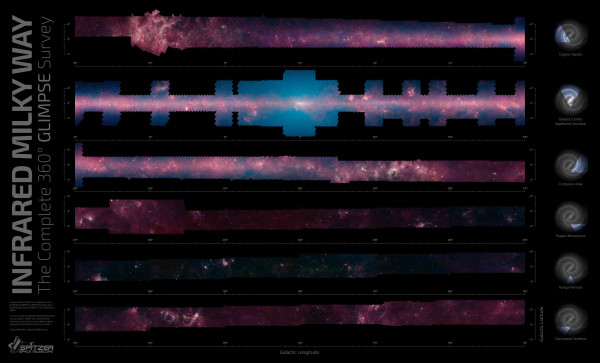 Image credit: NASA/JPL-Caltech/University of Wisconsin, via http://www.spitzer.caltech.edu/images/5762.
Image credit: NASA/JPL-Caltech/University of Wisconsin, via http://www.spitzer.caltech.edu/images/5762.
From Robert Allen on the same mosaic: "Is there any way to download the source image? I’d like to make some high res prints for posters."
You can download the raw files that they have, but it won't give you the same view I did. The downloads they have available are here: http://www.spitzer.caltech.edu/glimpse360/downloads, but they are not stitched together continuously. They are in six separate "strips" of varying thickness and coverage.
If you want the cropped, stitched and centered version, you'll have to go to my site directly; that was something I had to do myself!
From JCA on the closest conjunction of the year: "Nine planets. And don’t give me any of that appeal to authority crap."
Whatever. I honestly just used this comment as an excuse to publish some of the great shots of the conjunction I found from various amateur astronomers, including from Andrew Cooper,
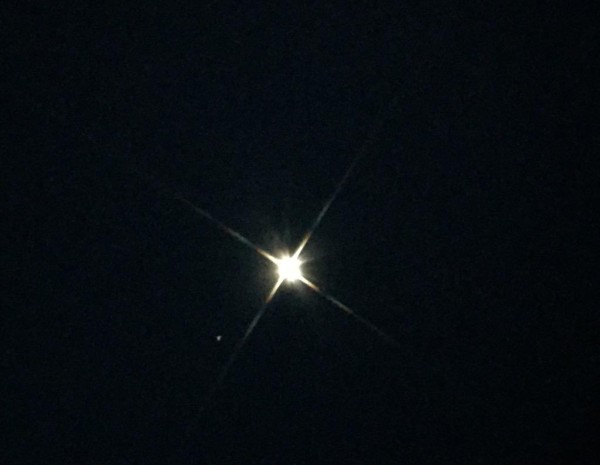 Image credit: Andrew Cooper of https://twitter.com/AndCoopes/status/573198520783650817.
Image credit: Andrew Cooper of https://twitter.com/AndCoopes/status/573198520783650817.
and Steve Knight.
Pretty cool stuff, and for those of you who photographed and shared it, thanks for helping those of us who were blinded by broad daylight during the conjunction!
From Michael Kelsey on some new 'things that shouldn't exist' in particle physics: "We have something roughly similar going on in particle physics, right now. Instead of successfully observing tetraquarks, pentaquarks, or glueballs, as predicted by the standard quark model, we’ve got a whole family of “X, Y, Z” particles, all sitting around the charm-anticharm resonances, but with weird and unexpected quantum numbers.
New physics? Well, a few theorists and experimentalists say so, but I rather doubt it. I strongly suspect (as do most of the participants) that these particles are going to turn out to be either “pseudoparticles” — interference effects among the several particle channels which turn on near 4 GeV — or subtle, but perfectly standard consequences of heavy quark interactions."
I know the post was about "the objects that shouldn't exist" in astrophysics, but particle physics is full of its own headaches as well. In astrophysics, you often run into chance coincidence observations that appear to be profound, but turn out to be typical and completely in line with what's expected when you see the whole picture. You find that initially unexpected results have more to do with a slightly incorrect modeling of a phenomenon than revolutionary new physics being needed. Something similar is often true in particle physics, but the way it manifests itself is more subtle.
These are all the particles of the standard model. By building any colorless combination of quarks-and-antiquarks, you should be able, in theory, to produce a (temporarily) stable particle that you can observe and measure, at least via its decay products. While quark-antiquark pairs (mesons) are plentiful, as are three-quark (baryon) or three-antiquark (anti-baryon) combinations, we have yet to observe a confirmed tetraquark (two quarks/antiquarks) or pentaquark (four quarks/one antiquark) state.
Do they exist? Or rather, do they exist as tetraquark/pentaquark states, or do they mix with other colorless states, giving rise to something that looks different? Are we seeing resonances/excited states/pseudoparticles/some other subtle effect that we are at risk of mis-identifying with these sought-after particles?
Perhaps. These are some of the issues Michael is alluding to, and represent subtleties we should come to understand in the future as the luminosity and energy of colliders like the LHC increase. The best part about scientific mysteries, about objects that "shouldn't exist," and about surprises is that they challenge us to increase the power and precision of our scientific models, theories and predictions. They help us raise the bar a little higher than it was yesterday.
Image credit: originally from Fermilab’s Symmetry Magazine, athttp://www.symmetrymagazine.org/.
And finally, from Omega Centauri on... well, you'll have to read for yourself: "On reading this, I had to check my calender to make sure it isn’t April fool’s day. In any case here’s this piece in sciencedaily which claims that a grand challenge problem is solved: http://www.sciencedaily.com/releases/2015/03/150306091617.htm
Black holes and dark sector explained by quantum gravity
In any this the extraordinary claims are that Stuart Marongwe from Varona University in Havana has a working version of quantum gravity, and the dark matter and dark energy pop out of it."
I almost never play the science-by-press-release game, since almost all of these grandiose claims turn out to be spurious. But in this case -- and I'm not sure why -- I took a look at Stuart Margonwe's paper, which is available for here free. Sad (but not surprising) to say, it is obviously and seriously flawed. For example, let's take a look at his value of "dark energy," given below:
 Image credit: screenshot from Margonwe, 2015, via https://www.academia.edu/8604226/The_Schwarzschild_Solution_to_the_Nexu….
Image credit: screenshot from Margonwe, 2015, via https://www.academia.edu/8604226/The_Schwarzschild_Solution_to_the_Nexu….
For one, if n=0, as he seems to be taking in order to arrive at "E_0", he should be unable to get a sensible value, since dividing by zero is very bad. For another, if the graviton energy (and hence, the value of the cosmological constant) is dependent on the Hubble constant, one must reckon with the fact that the Hubble constant was much larger in the past, and hence Lambda would have been too, something running counter to observations. The value he gives for Lambda today, mind you, is significantly too large, as even at the present moment, H_0 is only approximately 68% due to the cosmological constant.
If we are being candid, this is probably an embarrassing paper written by a crackpot.
But this brings up a larger point: you'll notice I never bring up papers like this. I don't write articles on them, and -- unless something is all over the place -- I don't bother to tear ideas like this down.
 Image credit: Jack Ziegler for the New Yorker, via Conde Nast at http://www.condenaststore.com/-sp/A-S-W-A-T-team-member-is-running-down….
Image credit: Jack Ziegler for the New Yorker, via Conde Nast at http://www.condenaststore.com/-sp/A-S-W-A-T-team-member-is-running-down….
What purpose does it serve to pluck a very bad paper from the depths of obscurity, elevate it to prominence where everyone can see it, only to tear it down? This might be a very low-hanging-fruit way of running a blog, but it doesn't seem like a very good way to bring the wonder, joy, and knowledge of science to people. It seems mean-spirited, and I think the only time that it's worth tearing down someone's work is when it's being heavily promoted as (and seen to be) more than it actually is.
So let the scientific pretenders continue to pretend on the fringes, but when they start to do actual harm to the public understanding of science, let's then step up and shed the light of scientific truth on the situation. Not to blind, nor to gloat, but rather to illuminate. That's what the light of science is all about.

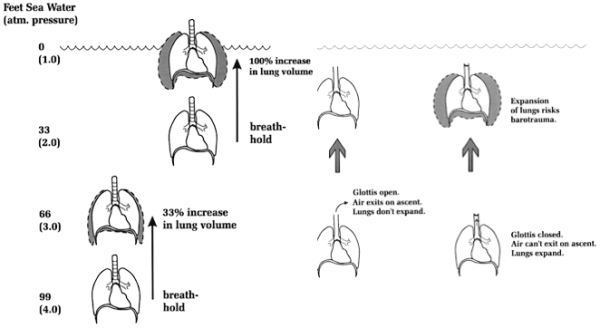
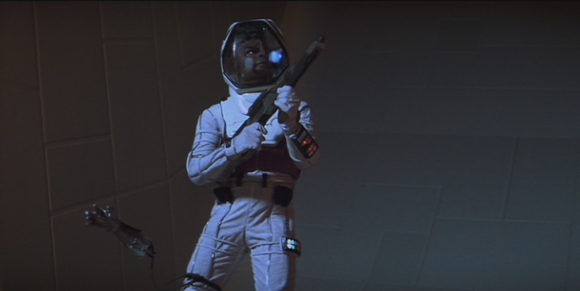
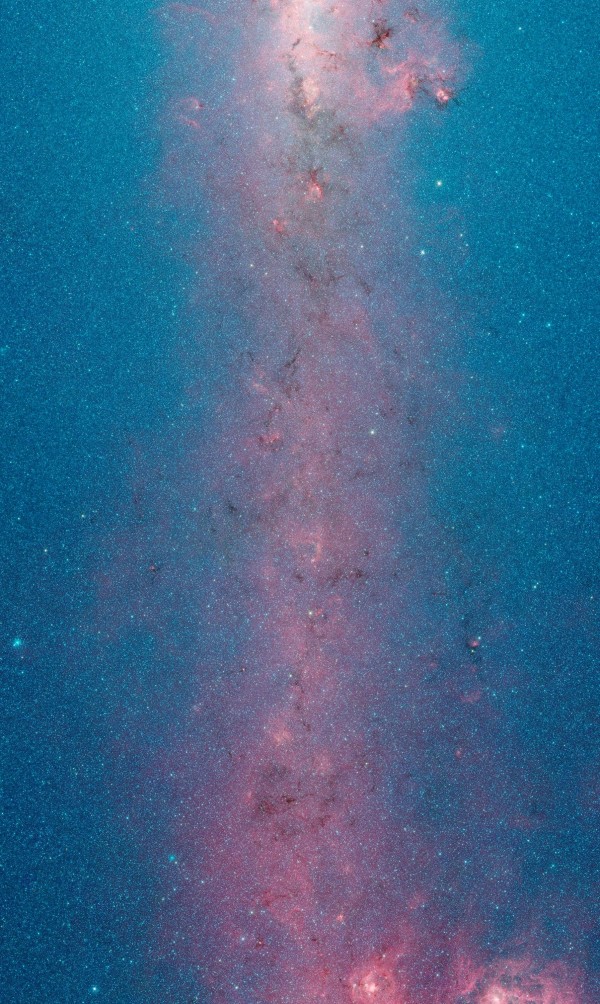

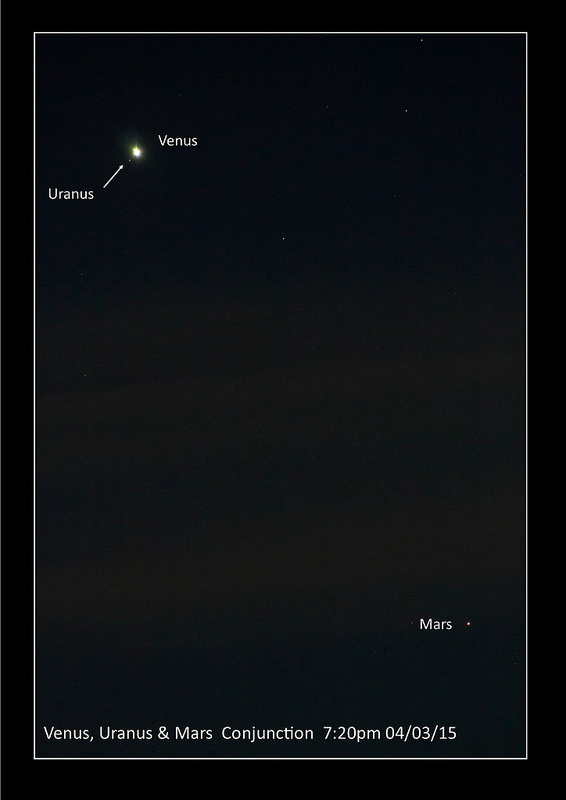
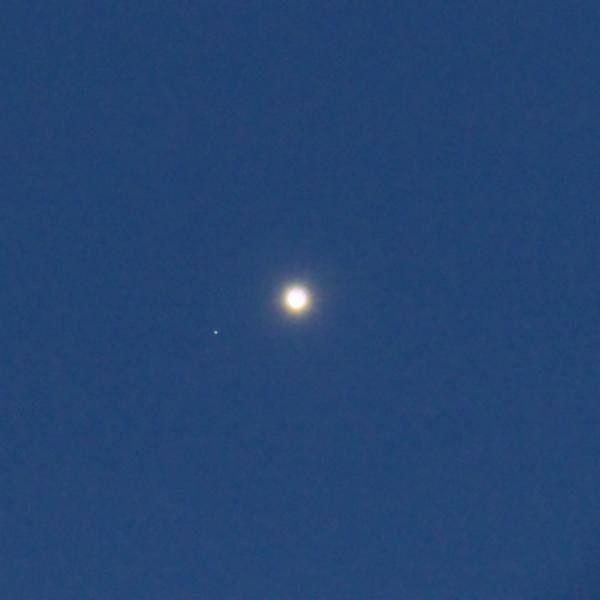
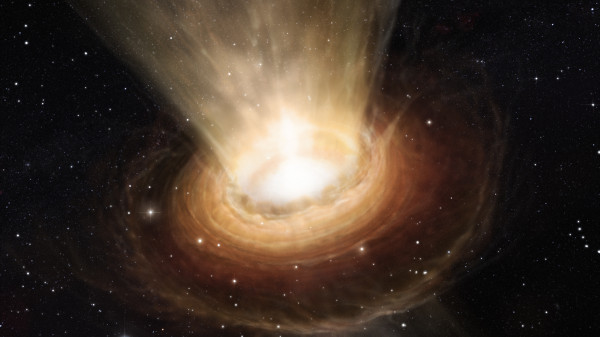
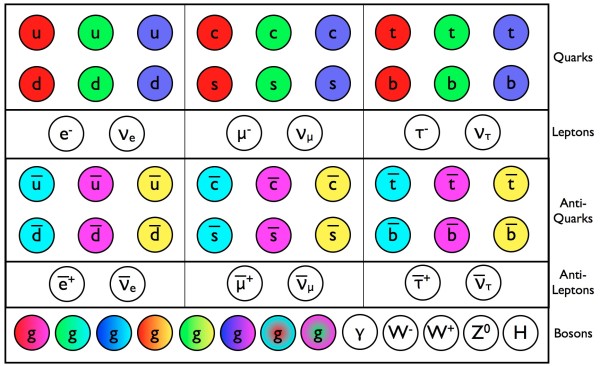
I'm not quite satisfied. My thinking was that the physical constraint of the ribcage and other bodily structures prevent the lungs from actually exploding, not so much the nerve reaction. The link to wikipedia barotrauma section doesn't actually tell what the required pressure difference is to cause such damage, although the link to "explosive decompression" hints that that might occur at the relevant pressures differences.
@ Flaky
as a divemaster, I can assure you Ethan is absolutely correct. Now, mind you, we are not talking about lungs exploding like a firecracker splitting the body in two. We are talking about lungs, or more appropriately alveolus bursting from pressure. Yes, your ribcage will prevent a gore fest, and your torso will look normal, but inside, your lungs will be shreds.
They key point is pressure difference. Underwater the ambient pressure is crushing you, and it's only the compressed gas in the bottle that's given to you by your regulator at ambient pressure, that prevents your lungs from colapsing. In vacuum, it's opposite. The pressure of 1 bar is much greater than 0 pressure around you. And gas in your lungs wants to equalize, and your muscles stand no chance to prevent it. Hence the pressure suit. But in fact, in space, lungs are your least problem. All liquids.. and we are 75% liquid, start boiling in vacuum, again because of pressure difference... so your blood will actually boil. Same thing that happens with rapid decompression... not only is there pulmonary barotrauma.. but there is decompression sickness which is caused by nitrogen bubbles forming in your blood and tissues.
There is a simple experiment you can do at the swimming pool (just be careful). Take a pvc pipe of 1meter lenght.. and some diamater you can put in your mouth.. submerge yourself in 1 meter of water and try to breathe from the tube. You will find out you can't. The pressure of just 1 meter of water is more than your diaphragm can handle.
As to what pressure difference is relevant. Medical books on diving state that only 0.2 bar pressure difference between alveolus and ambient pressure is enough to cause small fractures inside lung tissue.
Hope this helps.
SL,it's to do with the visceral visual idea of "exploding" that's the problem here. The ATL comment and your explanation is not what "explode" means when you just dump the name on someone. They visualise a picture like that in the gif at the top. An explosion like that of an exploding stick of dynamite. That's STILL the image held when you say the lungs DO explode. And that picture, as you say, is incorrect.
Rupture would hold the right image.
Technically you're right: the lungs do explode within the confines of the body cavity. But to someone just given the name explode, you're obviously not wrong. Where's the earth-shattering kaboom?
Same problems come with the image of The Big Bang, or Quantum, black holes sucking even light in, and, socially, rape. The latter one socially has the image of violence, similar to the early scene in "The Accused", however, *legally* it can mean something that looks entirely unlike it. So people can *legitimately* hold two *entirely different* ideas of what's going on because the word used dumps an entire visual image of what's happening, one of which says "Yes, this is happening" and another saying "Nope, not possible".
Not because people don't undertsand, but because they have a different visual idea of what the word means.
It's the same for the word "God", which is why I loathe the use of the word for things that don't hold to the Abrahamic ideals.
So use a different word which doesn't have the same visual idea but the same technical meaning.
Your lungs rupture. Exploding "feels" like it has to burst your ribcage. Rupture doesn't: only the lung needs to be ripped apart, not your ribcage.
Hie Ethan
Your concerns regarding my paper are addressed in the peer reviewed version which is now free to access here http://www.worldscientific.com/doi/abs/10.1142/S0219887815500425?src=re…
Also considering that the editor in chief and his editors are well known experts on all theories of gravity with each editor having no less than 400 papers published on the speciality ,it will be naive to assume that they would accept a flawed paper to be published in their journal. If you still have concerns please forward them to me and I will do my best to provide answers.
Regards
Stuart